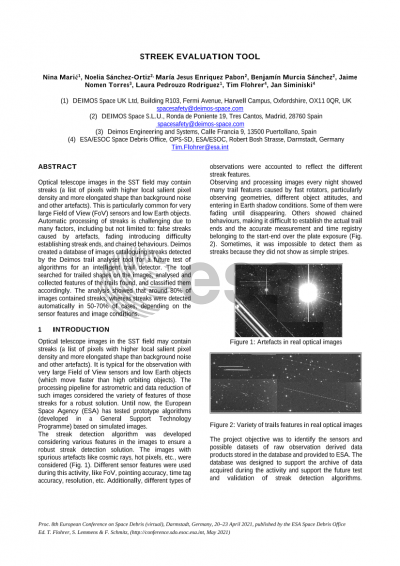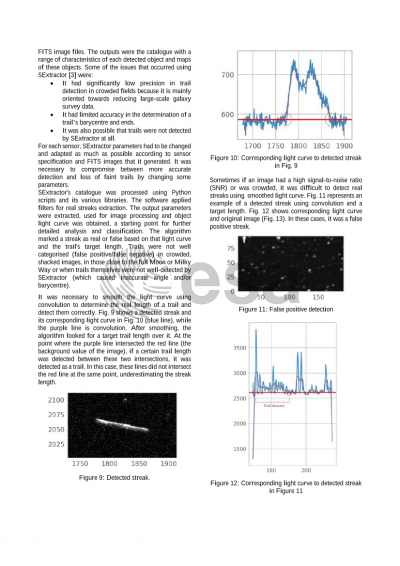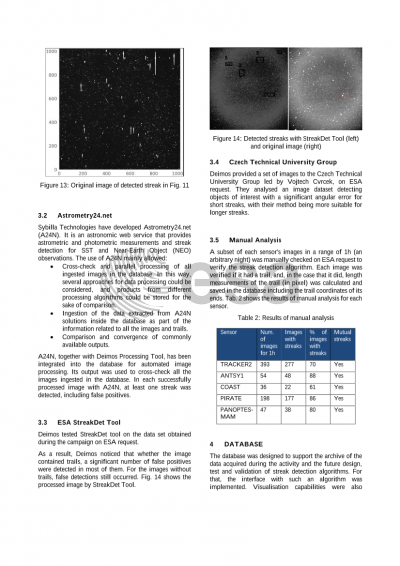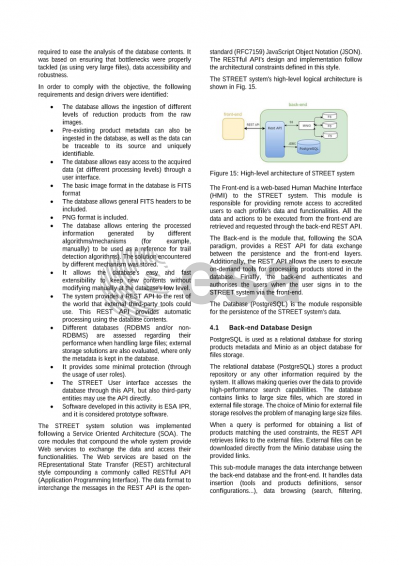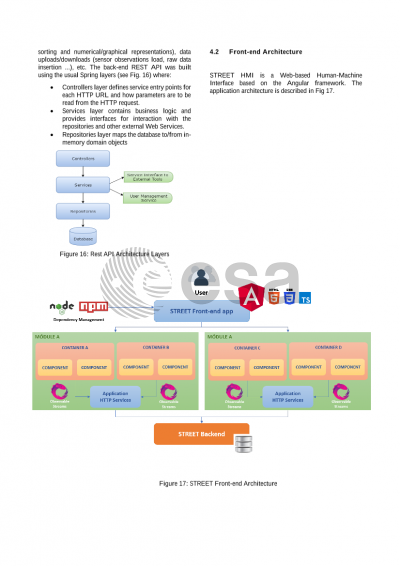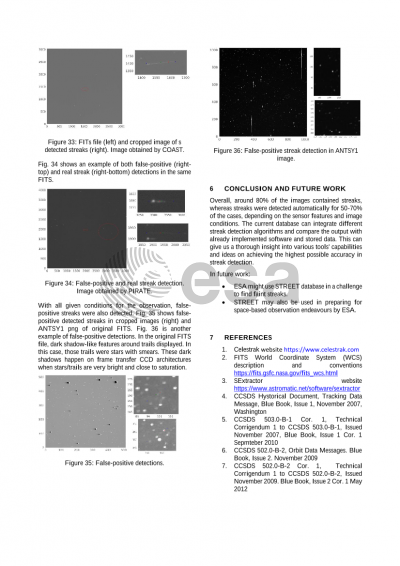Document details

Abstract
Optical telescope images in the SST field may contain streaks (a list of pixels with higher local salient pixel density and more elongated shape in comparison with background noise and other artifacts). This is particularly common for the observation of very small objects, very large Field of View sensors, and low Earth objects. Automatic processing of streaks is challenging due to a number of factors including but not limited to: false streaks caused by artifacts, fading introducing difficulty establishing streak ends, and chained behaviours.
The aim of this project was to create a software that helps in the analysis of streak detection algorithms. An image catalogue of detected streaks has been created and different data products/levels were included in the database accessible through the user interface.
An observation campaign was carried out using five ground-based optical sensors (ANTSY, TRACKER2, PANOPTES-MAM, COAST, PIRATE), during which more than 125 000 images were obtained. Different types of sensors and observations were used to capture the different type of streak features that could be encountered.
Automated detection and photometry of sources in FITs image files format have been done using an external software called SExtractor. Applying filters on its output files we extracted potential real streaks and a light curve for each streak candidate to determine if those streaks were real or false. Along with that, we designed and implemented a web-based Human-Machine Interface based on Angular framework, as well as a relational database for storing metadata and application data. The interaction between front-end and backend is done via HTTP through Services and Reactive technology where RxJS was used to maintain the flow of streams.
The Deimos processing tool was the baseline for characterising the images. Czech Technical University Group analysed an image dataset detecting objects of interest with a significant angular error for short streaks, whereas their method is more suitable for longer streaks. Furthermore, Astrometry24.net (A24N) has been integrated into the database for automated image processing and its output was used to cross-check all the images that were ingested in the database. In each successfully processed image with A24N, at least one streak was detected together with false positives. However, it turned out that with some sensors higher number of false-positive streaks were detected. This is due to particular constraints that have been found, like dealing with crowded and bloomed images, and mostly overcome manipulating its configuration file.
Overall, around 80% of the images contained streaks, whereas streaks detected automatically for 50-70% of the cases, depending on the sensor features, image conditions. The current database has an option to integrate further streak detection algorithms and compare the output with already implemented software and stored data. This can give us a thorough insight into different tools' capabilities and ideas on how to achieve the highest possible accuracy in streak detection. In future, ESA might be using STREET database in a challenge to find faint streaks and for preparing the space-based observation endeavours.
Preview
